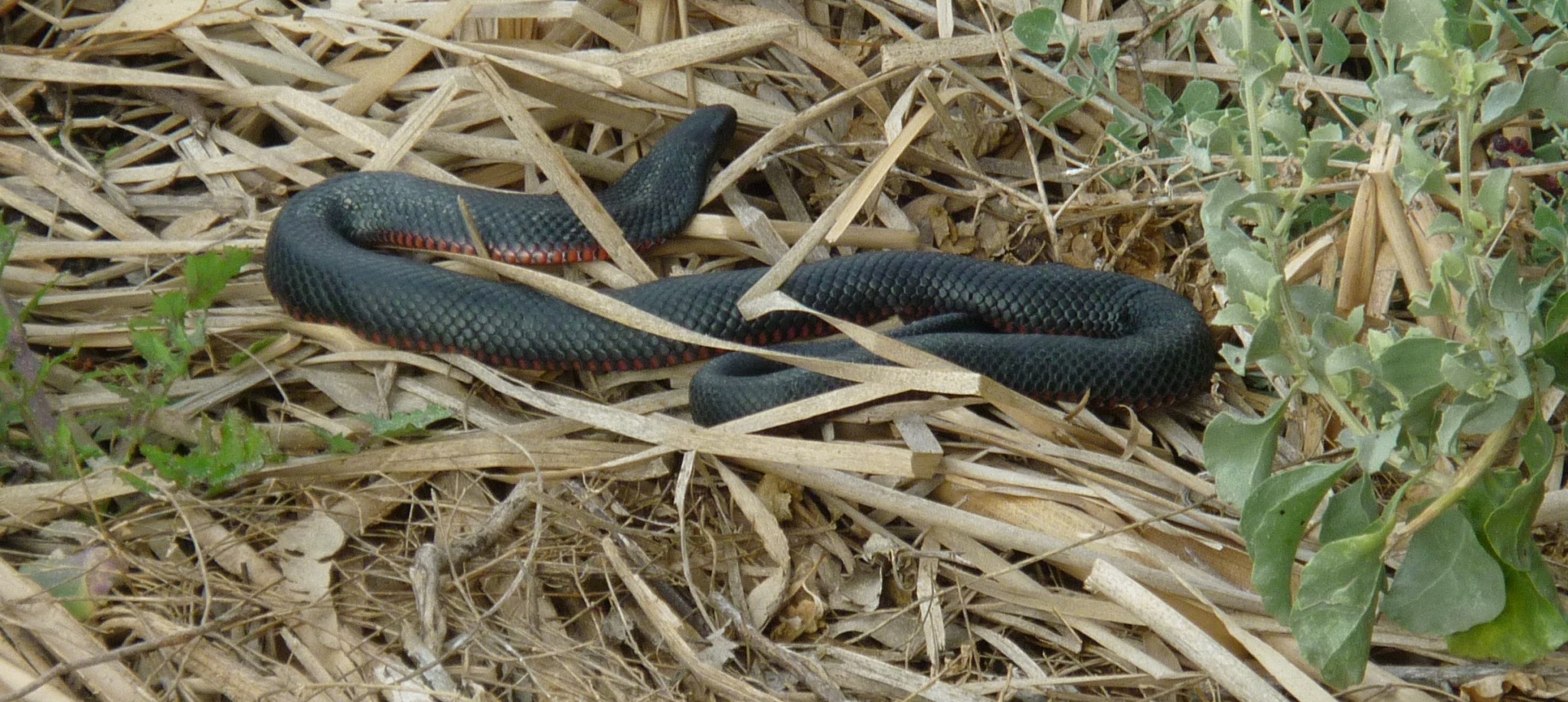
Fauna
There are many and varied ‘flying things’ within the wetlands which are crucial for the food web of the reserve ecosystem. The larvae of the Bag-shelter moth (Ochrogaster lunifer) are responsible for creating the pendulous web ‘bags’ which adorn the trees. The caterpillars are known for travelling in processions, so be careful not to step on a line of spiky brown critters.
There are some native pollinator species predominantly within the woodlands areas of the reserve, as there are no pollinating flora species within the wetlands.
There are many gastropods (aquatic snails) within the channels and basin of Fivebough Wetlands, which are crucial to provide food for higher trophic species (birds, reptiles, amphibians and fish).
There are also many insects which may be a hindrance to visitors during summer (flies) and in the early morning and late evening (midges and mosquitoes) – so insect repellent may be a welcome provision for your visit, as with any wetlands!
FISH
European Carp (Cyprinus carpio) and Gambusia or Mosquito Fish (Gambusia affinis) are the slender selection of fish known to inhabit the wetlands and channels of the reserve and while both are considered introduced pest species, they do contribute to the ecosystem as food for larger birds, such as birds of prey.
When the water levels are low in the channels, monster Carp over 50 cm long have been sighted, cruising around in the murky waters, so keep an eye out for one of these creatures – but children beware, if you’re near the water edge, you might get taken!
AMPHIBIANS
Spotted Grass Frog (Limnodynastes tasmaniensis), Long-thumbed Frog (Limnodynastes fletcheri), Eastern Sign-bearing Froglet (Crinia parinsignifera), Giant Banjo Frog (Limnodynastes interioris) and Peron’s Tree Frog (Litoria peronii) have all been found within the wetlands, a crucial link in the food chain as a food source for birdlife.
The mosaic of aquatic and fringing vegetation at Fivebough Wetlands suggests an ideal habitat for the endangered Southern Bell Frog (Litoria raniformis), which may have inhabited the site previously and may again through natural reintroduction, although recent surveys have not detected the species.
REPTILES
There are many Eastern Long-necked Turtle (Chelodina longicollis) which call Fivebough Wetlands ‘home’ and visitors will often spy them using the tracks to move between habitats. They are less likely to be spotted swimming as their dark shells camouflage quite well in the muddy water of the wetlands.
While the turtles are the slowest of all inhabitants of the reserve, and might be tempting to touch or pick up, interference with wildlife on the reserve is strictly prohibited (penalties apply) so please just admire these beautiful creatures from a distance.
Eastern Brown Snake (Pseudonaja textilis) or Common Brown Snakes live and breed within Fivebough Wetlands, due to an abundance of water, prey (amphibians, birds eggs) and habitat. They can be seen laying on the tracks in warmer seasons, sunning themselves, and are highly venomous and one of the more assertive species of snake.
Red-bellied Black Snakes (Pseudechis porphyriacus) also inhabit the wetlands and will be seen out and about in warmer weather. These snakes are less venomous (their bite is not usually fatal) and tend to retreat more readily than browns, however it’s not a good idea to get close enough to test them.
Peter’s Blind Snake (Ramphotyphlops bituberculatus) a small non-venomous and in fact non-biting snake, has also been sighted in the reserve, however they are nocturnal and so rarely seen.
Therefore, please keep an eye on the track ahead for their shiny bodies.
Various species of lizard are seen at the wetlands, including the Eastern Striped Skink (Ctenotus robustus), Boulenger’s Skink (Morethia boulengeri) and if you’re lucky, Blue-tongued Lizard (Tiliqua spp) and Eastern Bearded Dragon (Pogona barbata).
MAMMALS & MARSUPIALS
Short-beaked Echidnas (Tachyglossus aculeatus) have been observed within the reserve, however are not commonly seen by visitors, preferring to keep concealed within the woodland undergrowth.
Water-rats (Hydromys spp.) have also been sighted within Fivebough Wetlands, however are similarly not common to see as they prefer the safety of the cumbungi and rushes.
Eastern Grey Kangaroos (Macropus giganteus) are numerous throughout the woodland and grassland areas of the reserve, with in excess of fifty often recorded. Swamp Wallaby (Wallabia bicolor) and European Hare (Lepus europaeus) can also be sighted grazing in the gilgai country.
Visitors will also spot a Red Fox (Vulpes vulpes) or two dashing amongst the reeds at Fivebough, which are not welcome by native wildlife.
